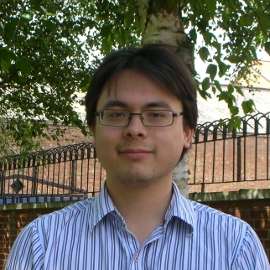Anyone who worries for the health of contemporary composition obviously wasn’t at the Southbank Centre this Sunday, where the London Sinfonietta presented a whole afternoon and evening’s worth of new music in and around the Queen Elizabeth Hall. Their New Music Show 3 comprised four shortish concerts, a series of miniature recitals strategically placed around the hall’s backstage area, two discussion sessions with composers, and stacks of innovative, interesting, new music. It’s strange to be able to describe something as both bite-sized and marathonesque, but Sunday afternoon certainly felt that way, and these are just a few highlights, which will hopefully give some idea of just how much was going on.
The two most substantial recitals were both preceded by short pieces in tribute to those two giants of 20th- and 21st-century composition who passed away this Autumn, Hans Werner Henze and Elliott Carter. Both were introduced by Sinfonietta pianist John Constable and wonderfully realised by the players, Henze’s piano trio Adagio Adagio (1993) gorgeous, sunkissed and heavy on the vibrato; Carter’s Esprit rude / Esprit doux (1985) for flute and clarinet brimming with brilliance, a celebration of characterful counterpoint.
While the two concerts which followed these tributes were generally very varied, they were united by both being conducted by the ever-reliable Martyn Brabbins, and both featuring a concerto played by pianist Huw Watkins. He was a remarkably (impressively) calm performer for Gerald Barry’s Lisbon (2006), an exciteable, slightly crazed abstract tour of the city with whole palmfuls of notes at a time and added mandolin, and he was equally strong in Tansy Davies’ new piece Nature, a BCMG commission receiving its London première here. It’s a well named composition, sounding a little like an ecosystem to me, with each instrumental part finding its own way through the texture and contributing to a dense, sizeable and occasionally beautiful thicket of sound. I didn’t follow Davies’ programme note, which had something to do with maenads, but the title alone was provocative enough to make for a fascinating 20 minutes. Further hearings would be very welcome.
In the afternoon’s most provocative piece of programming, this outward-looking piece was coupled with Larry Goves’ very inward Trends in Personal Relationships, a title he told us came from a business management textbook, and it seemed to focus on the human world as opposed to the natural one. A lightly scored, airy piece, its instrumental lines again acted rather independently, but there was a solitary air to each part here, with hints of dialogues meandering ambiguously. This is another piece I’d love to hear again and which I hope the Sinfonietta find room for in future.
Due to some tight scheduling, I was only able to make it to three of the five stops on the “hidden tour” of backstage that was also going on. Each stop featured a short piece of music coupled with an installation by students at Central Saint Martins College of Arts and Design. While missing two of them was a shame, they did seem by far the most missable part of the day, with some rather abstruse artistic concepts (try sticking your head through a picture frame to watch a woman wearing silver foil play the violin and sing to herself while three figures clad in tight, odd black outfits occasionally wave their arms about and/or pop balloons) pointing back rather too far towards an inaccessible, more-conceptual-than-thou approach to new art from which the rest of the day was refreshingly free.
I confess to being a little worn out by the final set of the day, but this one thoughtfully had a rather more relaxed air to it, with co-curator and cellist Oliver Coates coupling two experimental but calming solo cello pieces with a selection of songs by Serafina Steer, a singer-songwriter-harpist who has collaborated with Jarvis Cocker and is carving out a niche for herself in the alternative music world. Her lyrics are on the intelligently self-aware side of kooky (“Me at a party, me at a party”, etc.) and her harp parts are beautiful, artfully textured and inventive. She reminded me of Nico, but with far more musical talent, a better voice, and a harp. This was a great reminder at the end of an enjoyable but long day that this sort of new music is OK too; it doesn’t always have to be virtuosic piano parts and ear-bending experimental high-wire acts. The key thing is just that the music is new, and worthwhile.


